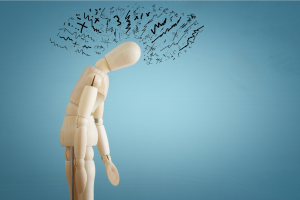Understanding Our Style of Relating When Triggered
 When we are triggered emotionally, it can all feel sort of choiceless; like we have lost control of ourselves. Even if we have the awareness of our reaction, it is difficult to stop our emotional response, because the nervous system, the brain, the memory centers are all interacting.
When we are triggered emotionally, it can all feel sort of choiceless; like we have lost control of ourselves. Even if we have the awareness of our reaction, it is difficult to stop our emotional response, because the nervous system, the brain, the memory centers are all interacting.
Our learned style of relating
Most often our emotional language relationally stems from our earliest attachment styles. If you have had a fairly consistent caregiver who was attuned to your needs, you have what is termed “secure attachment.” When struggles occur in your relationships as an adult, you are able to remain in connection and work through the difficulty. If, however, your early caregiver was inconsistent, either too intrusive or unavailable, your attachment style might be “anxious” or “avoidant” as a child and termed “preoccupied” or “dismissive” as an adult.
People with a dismissive style have a withdrawing quality that implies the lack of trust that anyone will be there for them; they do it themselves, it’s not that big a deal anyway. This person has hard time forming and keeping relationships. Dismissive style relies on the thinking brain and logic.
People with a preoccupied style go toward relationships all the time out of anxiety and uncertainty, anxious to talk and make sure everything is okay. They look for validation and feel they can’t do anything on their own; they are nothing without someone. Preoccupied style relies on the emotional brain.
There is another attachment style category, called “unresolved.” This is relative to traumatic events occurring during childhood, which could be a complicated death or direct physical abuse, incest, etc., and lead to very erratic and chaotic interactions with others. Unresolved style relies on the primal brain, relative to assessing for safety in the environment, a survivalistic hyperarousal of the fight or flight mechanism.
How our brains respond
Our “M.O.,” our consistent fallback approach when stress or conflict arise in a relationship, happens in rapid-fire motion. We are “reacting” versus “responding,” and the basic difference between the two has to do with two different areas of our brains. Reactivity arising out of the emotional center (Limbic), and responsiveness, from our reasoning center (cortex). When we get triggered, our brains lose connection, go offline so to speak in our higher functioning reasoning cortex. The task is to reconnect the lines between the limbic/emotional and the executive/cortex.
That process begins with awareness of body sensation apart from the story content of “he said, she said.” By attuning to your internal somatic senses, “I notice my racing heart, the tightening in my stomach, I can feel my rapid breath…,” focal attention redirects the brain and allows the pause necessary to bring forth the possibility of changing the repeated past pattern of always doing such and such. The interactive loop between body sensation, nervous system, brain, emotion, thoughts/beliefs, behavior is constantly occurring, and we can learn how to intercede on any level to form new memory and thus, new reaction.
The past is not in the past if we have not integrated the memory. The memory center of our brain includes Explicit and Implicit Memory. Explicit memory is the awareness of the facts and reality of an event as it happened in the past. However, implicit memory involves the activation of our sensations, feelings, perceptions, bodily actions, mental models at the time of the event (generalized frame of understanding experience), as well as our priming to react (nervous system ready to respond to similar experience). Implicit memory enters our nervous system without our even being aware of it. It is the first layer of memory processing, and is all we have until the age of 18 months. To integrate an implicit memory into the conscious, factual past of explicit memory requires an area of the limbic/emotional brain called the hippocampus.
Learning to react differently when triggered Our emotional responses, or “language,” when we are relating, points toward our implicit memory triggers. We need to begin to intercede from a somatic or body level, which can then re-inform the emotion, then re-inform the thought perception, and then change the need to act on the urge toward old patterns of behavior.
When we get triggered and are reminded of the past unresolved issues, our body signals to us the experience of the past as if it is happening now. Take the example of a partner not responding to us; it reminds us of how our father didn’t listen and ignored us; we feel the same sinking feeling in the stomach, the same feelings of anxiety, frustration and hurt rise, the negative self perception of worthlessness begins the loop of negative self talk. Our bodily action or behavior might be to get angry and yell. Our mental model might look like: men = abandonment, and our priming might be to utilize past information to ready us to take action to protect ourselves. However, if we resist these familiar reactions, and “re-inform” with a new mental model and new sensory experience, the new relational interaction, both externally and internally, will create new a memory.
Once we begin to understand the sanity of our insanity, that our brain/bodies, mind/hearts, are trying to keep us safe, we can then inquire into the data in our memory banks, find out how relevant they are, and begin the slow journey back to a more compassionate, conscious interaction with our reactiveness. By learning how to cultivate awareness beyond basic memory and survival, we can expand the possibility to relate to our inherent safety, belonging, and connectedness.
Copyright 2011 Diane Renz, L.P.C., Your Gateway to Healing, Inc.
Tags: anxiety, anxiety symptoms, communication, confidence, critical inner voice, defenses, development, isolation, personal growth, psychological advice, psychological tips, self-awareness, self-esteem, self-understanding, stress management2 Comments
Leave a Reply
You must be logged in to post a comment.










Oh this is an excellent article and a great way to explain what happens when one gets triggered and how important it is to understand what it is we do when we come from an abusive background. Makes perfect sense to me.Validates the work I do with my clients and helps me to put it all into perspective. Thankyou Diane
amazing how easily these attacks are triggered we really should gravitate toward what makes us happy.